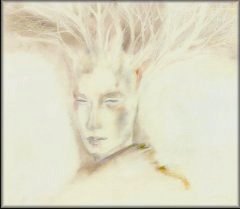|
|
|

The Old English Woodcarving Company

By Roman law, the forest at its gates belonged to no one and lay beyond civil jurisdiction. This was the realm of Silvanus, the god of sacred boundaries and wilderness. As Rome grew, the power of Silvanus dwindled -- not only locally, but in all the lands where the Roman empire extended. In those times, explains Robert Pogue Harrison (in Forests: the Shadow of Civilization), "the forests were literally everywhere: Italy, Gaul, Spain, Britain, the ancient Mediterranean basin as a whole. The prohibitive density of the forests once preserved the relative autonomy and diversity of the family- and city-states of antiquity. The forests were obstacles -- to conquest, hegemony, homogenization. By virtue of their buffers, they enabled communities to develop indigenously; hence they served to localize the spirit of place. In their woodlands lived spirits and deities, fauns and nymphs, local to this place and no other. In their drive to universalize their empire, the Romans found ways to denude or traverse this latent sylvan mass . . . building roads, imperial highways, institutions, a broad integrated network of 'telecommunications.' "Mass clearings of land for building and agricultural use had profound ecological implications even in antiquity, as forest after forest was demolished and the soils of once-fertile lands eroded. Our modern despair as we watch woodland disappear from the planet is not an emotion unique to the 20th century. As early as the 4th century B.C., Plato wrote with grief (in the Critias) of the barren hills surrounding Athens as grove after grove fell before the plough or the ship-builder's axe.
According to Greco-Roman tradition, dryads (the nymphs who live in trees) die when their personal tree is cut down. This is also true of other tree spirits who inhabit the forests of Europe, including the vegetation faeries of many different cultures. In some cautionary tales, the faery folk take their revenge upon humans who dare disturb their haunts. In others, the faery quietly pines when her habitat is destroyed -- and when she dies, the beauty and magical soul of the land dies with her. Supernatural forest spirits take many forms, ranging from the exquisite dryads of the Greeks to the ugly tree trolls of Finland and Norway. The swor skogsfru (wood wives) of Sweden are seductive and utterly beautiful . . . from the front. In back, these faery women are made of bark and are hollow as logs. In Italy, the silvane (wood women) mate with silvani (wood men) to produce the folleti, the enchanting faeries of the land. In England, many earthy brownies and piskies make their homes in oak tree roots, and each kind of tree has its own faery to tend it and enable its growth. Men made of bark seduce young maids in the fairy tales of eastern Europe. Some of the men are dangerous, while others make tender lovers. (See Jane Yolen's haunting tale "The Tree's Wife" in her collection Dream Weaver for a modern take on this theme.) The wood spirits in the forest of Broceliande (now known as Paimpont) in Brittany also range from the benevolent to the malign. In one old tale, a lost traveler finds his way to a strange chateau in the woods. The beautiful lady of the house offers him food, drink . . . and her own arms to sleep in. He gallantly refuses the latter, which breaks the faery's hold on him. The morning light reveals the chateau in ruins, empty, reclaimed by the forest. Broceliande is the woodland where Merlin the magician lies entrapped in the bowels of a tree, tricked or seduced by the faery sorceress Vivian (also known as Nimue). Merlin is a figure intimately connected with forests in Arthurian lore, for it was during his years of madness roaming the forests of Wales, after the disastrous Battle of Arderydd, that he learned the speech of animals and honed his prophetic powers. A similar tale recounts the trials of Suibhne, an Irish hero cursed in battle, forced to flee to the woods in the shape of a bird. Like Merlin (and other shamanic figures who seek Mysteries in the wilderness), Suibhne goes mad during his long exile -- but when he emerges from the trial, he has mastery over creatures of the forest. (For a gorgeous modern rendition of this tale see Sweeny's Flight, an edition containing Seamus Heany's long poem based on the myth, along with photographs of the Irish countryside by Rachel Giese.)